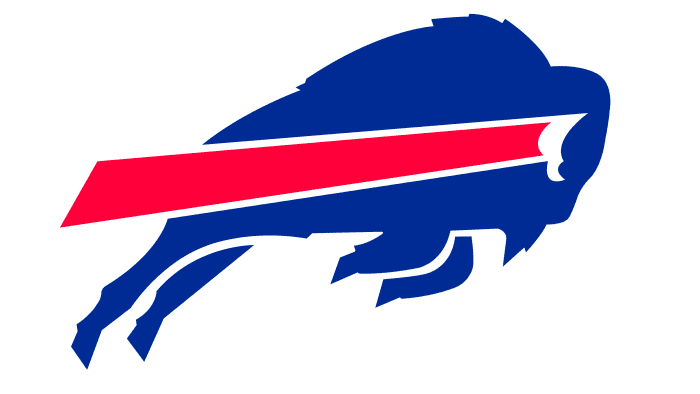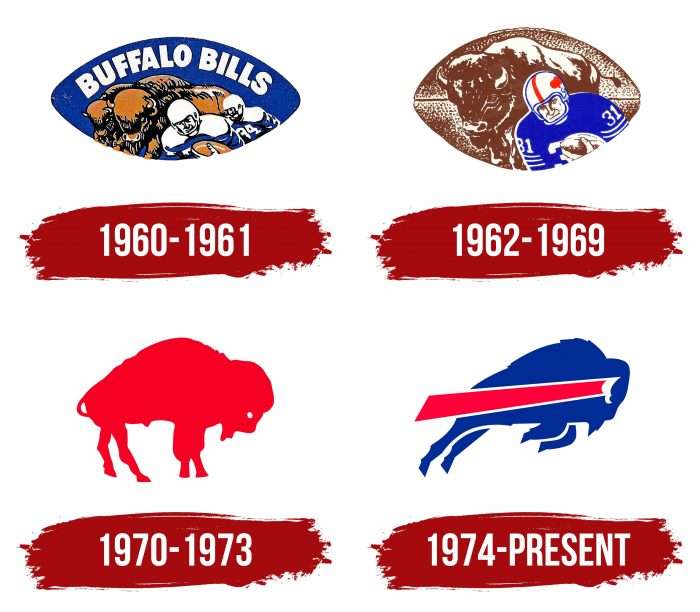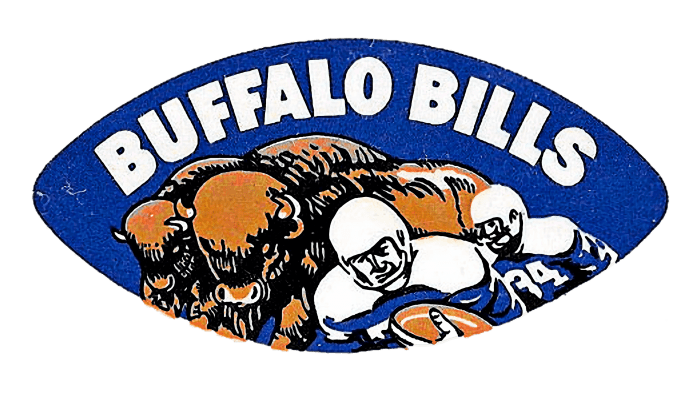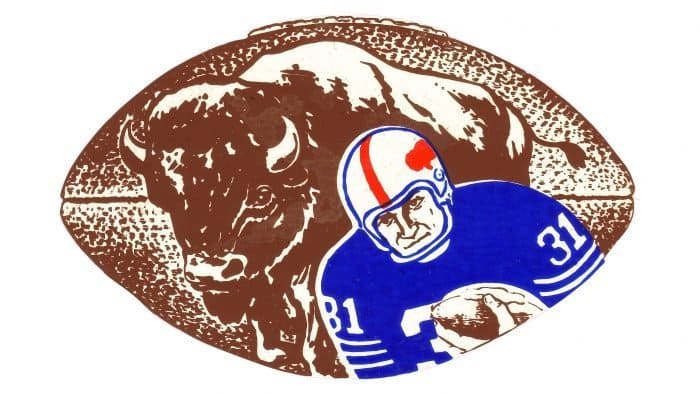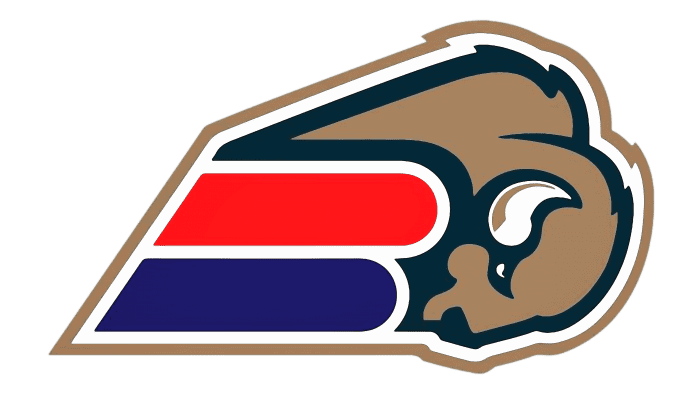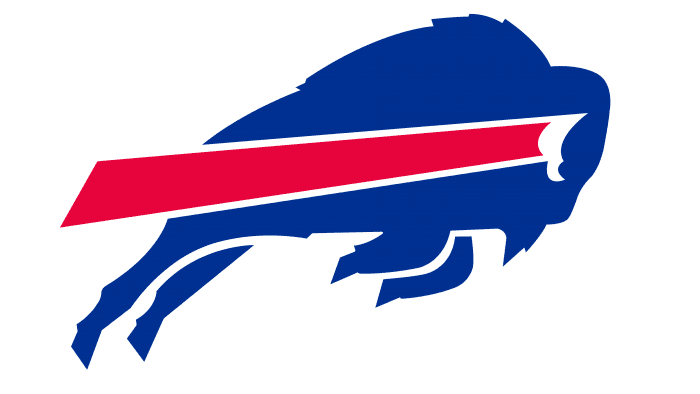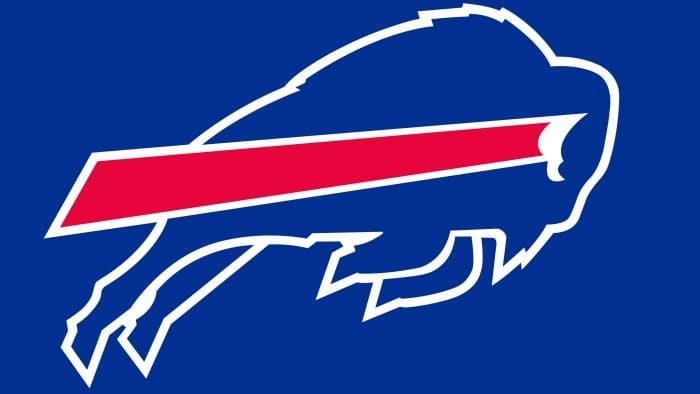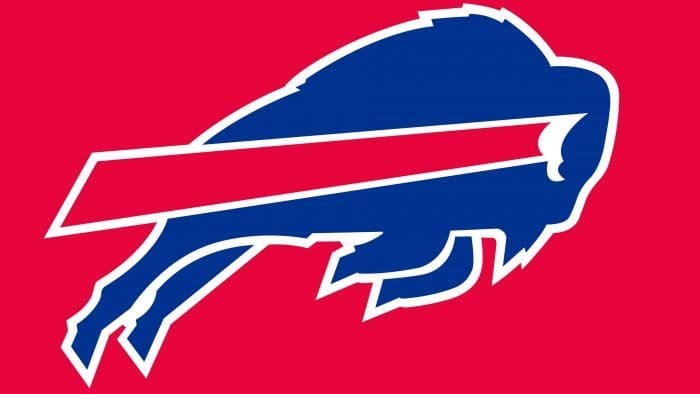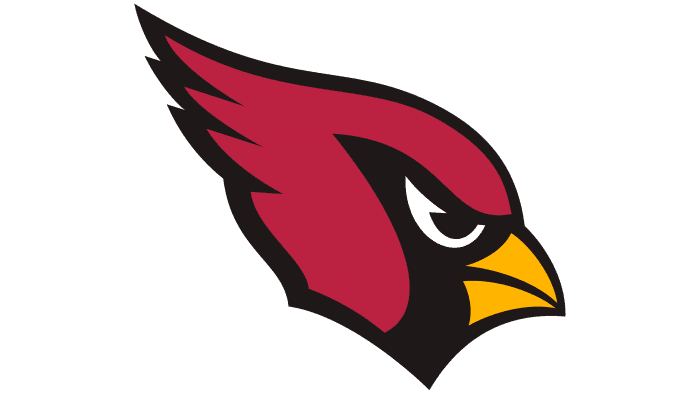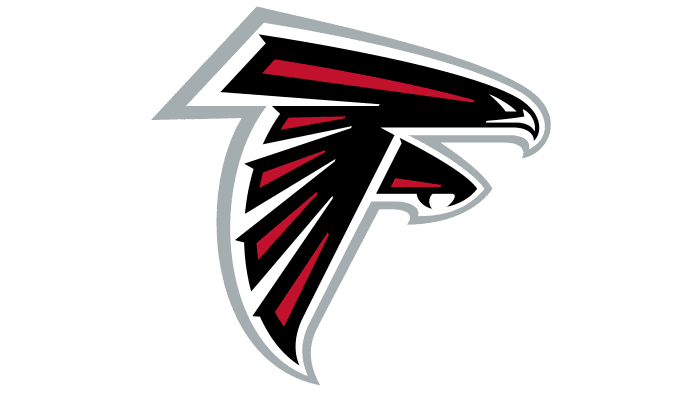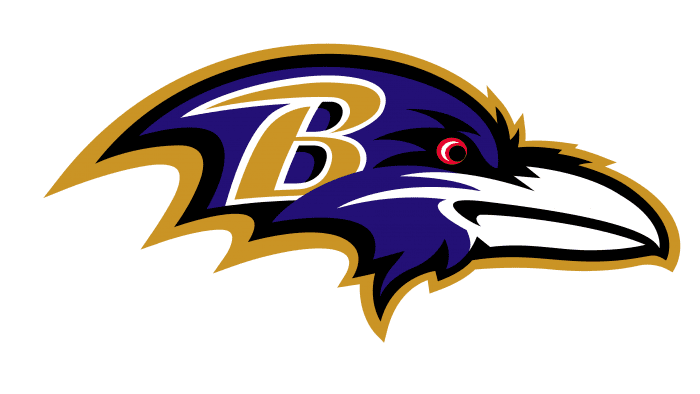The Buffalo Bills logo features a stylized depiction of the mascot and a red streak. The streak amplifies the effect of acceleration and movement, lending dynamism to the minimalist buffalo mascot – a display of determination and strength.
Buffalo Bills: Brand overview
| Founded: | October 28, 1959 |
| Founder: | Terry Pegula, Kim Pegula |
| Headquarters: | Orchard Park, New York, U.S. |
| Website: | buffalobills.com |
The Buffalo Bills are a professional American football team playing in the Eastern Division of the American Football Conference. They began competing as a franchise of the American Football League in 1960, but as a result of the AFL-NFL merger in the 1970 season, the club transitioned to the National Football League.
The first owner of the club was Ralph Wilson. Lamar Hunt, founder of the AFL, offered him to join the major league and provided a list of 6 cities. He chose Buffalo – lawyer Paul Crotty struck a profitable deal with Buffalo’s Civic Stadium, offering Wilson full control over the venue and a significant discount on the rent.
Fans wanted to name the new franchise after the former AAFC Bills, which merged with the Cleveland Browns in 1950. Ralph Wilson supported this idea. The old namesake team was named after the popular quartet Buffalo Bills, which was named after showman and hunter William Frederick Cody. He earned this nickname by killing 4,280 buffaloes in eighteen months.
Ralph Wilson passed away in 2014. The football club’s owners became Terrence Pegula and his wife Kim. They bought the franchise for 1.4 billion dollars on October 10th.
Meaning and History
Each of the four Buffalo Bills logos is unique. But they all share a common element – the buffalo. Initially, artists depicted two animals, and to show the connection to sports, they added a large elliptical ball and two football players in the team’s white and blue uniform. Then they went minimalist, reducing the number of characters: one player, one buffalo.
1970 was a turning point for the club. At this time, a simplified logo with a red silhouette of the animal appeared. It was used for only three years but served as the basis for the next – permanent – emblem.
What is Buffalo Bills?
The “Buffalo Bills” are a team competing in one of the four divisions of the American Football Conference of the National Football League. Founded in 1960, it immediately became part of the AFC. The club is now based in the Buffalo-Niagara Falls metropolitan statistical area and plays at the Highmark Stadium in Orchard Park, New York.
1960 – 1961
The central image of the Buffalo Bills logo is a blue football. It serves as the background for other elements. The logo features a herd of buffaloes and two football players in the Buffalo Bills’ uniform of the time. Above is the white wordmark “BUFFALO BILLS,” set in block letters. The font is sans-serif.
1962 – 1969
The second version of the Buffalo Bills logo resembles the first. Designers again made the ball the background. Now, the logo features a brown buffalo in grainy sepia and a football player with the number 31 on a blue and white shirt. On the head is a white helmet with a red horizontal stripe and a Buffalo image. The wordmark “Buffalo Bills” disappeared; only distinctive equipment remains, indicating affiliation with the franchise.
1970 – 1973
In 1970, designers changed the original concept. They removed the balls and players. Only the red Buffalo remained – the same one that was on the helmet in the last version of the Buffalo Bills emblem. The granularity is low; contours are absent.
2002 (unused)
This is an unused logo of the Buffalo Bills team. It was created in 2002 when General Manager Tom Donahoe decided to change the players’ uniforms and logo. A stylized letter “B” (meaning Buffalo Bills) in the lower left corner, consisting of one red and one blue bullet. Above it is an image of a charging bison. Fans were against these changes, so the franchise returned to the 1974 version.
1974 – today
The modern Buffalo Bills logo was created by aerospace designer and commercial illustrator Stevens Wright. His wife, Jere Wright, was a production manager at NFL Properties, the group responsible for licensing and branding the league. Jere brought her husband’s talents to the attention of David Boss, who was then the director of creative services at NFL Properties. Boss immediately gave Stevens a significant assignment: to create a new logo for the “Bills.” In the summer of 1973, Stevens Wright presented the “Bills” with several sketches. The team’s general manager, Robert Lustig, responded with a letter expressing his preference for the design that eventually became the “Buffalo” logo. The logo’s creator has always been proud of it, and it’s no wonder: it was created in 1974 but is still used by the team to this day. It’s been impossible to find a replacement for it: the only new variant offered for consideration in 2002 was immediately rejected by fans as unsuccessful.
The Buffalo Bills emblem featured a blue bison – as schematic and minimalist as in the 1970 version. Unlike the previous logo, this one is more dynamic. The movement is indicated not only by the flying posture of the bison but also by the red slanting stripe extending from its white horn. This image includes all the colors of the football club except dark blue. The debut of the finished logo took place in the 40th season.
Buffalo Bills: Interesting Facts
The Buffalo Bills are a football team from Buffalo, New York. They’ve been playing since 1960 and have a lot of fans who care about them.
- Early Wins: They started in the American Football League (AFL) and won two championships in 1964 and 1965 before joining the NFL.
- Super Bowl Runs: From 1990 to 1993, the Bills made it to the Super Bowl four times but didn’t win any. Even though they didn’t win, getting there so many times was a big deal.
- Big Comeback: In January 1993, they played an amazing game. They lost by 32 points but came back to win 41-38. It’s the biggest comeback win in NFL history.
- Home Stadium: They play games at Highmark Stadium, once called Ralph Wilson Stadium. Thanks to the fans, it’s known for being loud and can get super cold and windy.
- Bills Mafia: Their fans are called the “Bills Mafia.” They’re known for being super supportive and doing much charity work.
- Snow Games: Buffalo’s weather means there are some crazy games in the snow. One of the biggest was in December 2017 against the Colts, played in almost a snowstorm.
- Wall of Fame: They honor their best players and coaches on their Wall of Fame at the stadium. Famous names include Jim Kelly and Thurman Thomas.
- Fast Plays: In the late ’80s and early ’90s, under coach Marv Levy and quarterback Jim Kelly, the Bills were known for playing fast without huddles, which greatly helped them.
- Games in Canada: They were the first NFL team to play a regular-season game in Canada, holding some games in Toronto from 2008 to 2013.
- J. Simpson: Before he was famous for other reasons, O.J. Simpson was an incredible running back for the Bills in the ’70s. He was the first to rush over 2,000 yards in a season 1973.
The Buffalo Bills have a rich history with many ups and downs, a supportive fan base, and some moments that football fans will never forget.
Font and Colors
The buffalo, the club’s primary symbol, is depicted in an abstract style. However, this did not prevent the artist from creating a sense of dynamics, showing the animal’s character, and expressing its individuality. Movement is indicated by the silhouette of a running buffalo and an expanding red line stretching from the white horn to the emblem’s invisible left border.
The logo designer did not use any tags. As an artist, he focused all attention on the graphic component and did so at the highest level. Jere Wright chose a combination of only three colors: royal blue for the animal, red for the stripe, and white for the surrounding space and small details.
Thus, he combined the main shades from the official Buffalo Bills palette without overloading the logo with extra elements. And the version he created became a classic: the club still can’t “get rid” of its iconic red and blue badge, which fans have grown so fond of.
Buffalo Bills color codes
| Royal Blue | Hex color: | #00338d |
|---|---|---|
| RGB: | 12 46 130 | |
| CMYK: | 100 60 0 20 | |
| Pantone: | PMS 287 C |
| Red | Hex color: | #c60c30 |
|---|---|---|
| RGB: | 213 10 10 | |
| CMYK: | 10 100 100 0 | |
| Pantone: | PMS 186 C |
| Navy Blue | Hex color: | #00274d |
|---|---|---|
| RGB: | 0 39 77 | |
| CMYK: | 100 44 0 76 | |
| Pantone: | PMS 5395 C |
FAQ
Why is there a red stripe on the Buffalo Bills logo?
The red stripe on the Buffalo Bills logo symbolizes movement and acceleration. It gives dynamism to the image, indicating that the “Buffalo” is not standing still but rushing forward at high speed.
Why is a bison depicted on the Buffalo Bills logo?
The bison in the Buffalo Bills logo illustrates the name of the football club.
Where did the Buffalo Bills logo come from?
Stevens Wright drew the logo for this NFL franchise in 1971. He took the previous version as a basis, making the silhouette more proportionate and adding dynamics to the bison.
